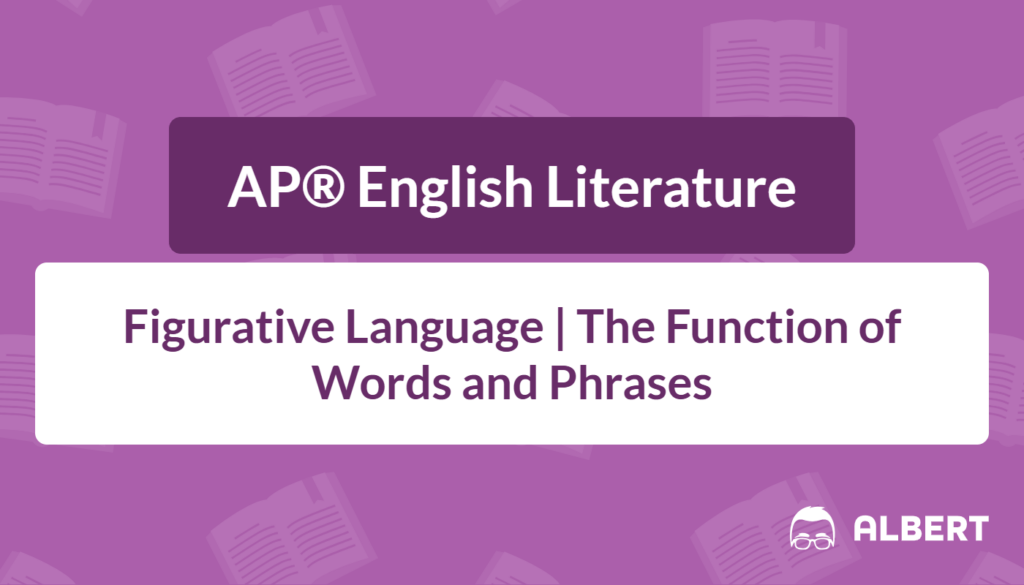In many literary works, specific words and phrases do more than fill a page. They can shape the reader’s emotional reaction, illuminate a character’s personality, and point to a text’s larger themes. This process involves word choice, also known as diction: the deliberate selection of words to communicate meaning. By focusing on how authors choose their vocabulary, readers become more aware of the underlying sentiments and ideas at play. The sections below explain the foundations of word choice, show how to interpret its effect on characters and themes, and offer examples from notable AP® Literature texts.
What We Review
Understanding Word Choice
Readers often wonder, “What is diction?” or seek a quick word choice definition. Put simply, diction refers to the selection and arrangement of words in a piece of writing. Authors may opt for casual, everyday expressions or more refined, elaborate terms depending on the situation and the effect they want to create.
When discussing poetic diction, the focus is often on language that heightens imagery and emotional resonance. In poetry, for example, words can be chosen for their musical quality or to emphasize deeper symbolism. Meanwhile, in novels or drama, diction might reinforce a character’s background or the story’s setting.
- Formal diction: Elevated language that conveys respect or authority.
- Informal diction: Casual, conversational words that reflect everyday speech.
- Colloquial diction: Regional or dialect-based vocabulary that shows a character’s cultural or social background.
- Poetic diction: Figurative or lyric-based language that amplifies imagery and emotion.
Consider Virginia Woolf’s Mrs. Dalloway. As Clarissa prepares for her party, the narration captures fleeting emotions and memories in lines like: “She felt very young; at the same time unspeakably aged.”
- “Unspeakably” suggests something beyond words—an internal emotional contradiction.
- The juxtaposition of “young” and “aged” mirrors the novel’s stream-of-consciousness style.
- The diction reveals Clarissa’s fragmented, reflective mood.
Woolf’s word choices deepen the novel’s themes of time, identity, and mortality.ve mood.
The Role of Diction in Character Development
Authors reveal character traits through dialogue, narration, and descriptive passages. In Lorraine Hansberry’s A Raisin in the Sun, Walter’s diction shifts based on his emotional state and sense of pride. In one argument, he says bitterly, “I’m a volcano. I’m a giant surrounded by ants!”
- The emotionally charged word “volcano” conveys anger and repression.
- “Giant” and “ants” contrast his self-image with how he feels others perceive him.
- The metaphorical diction heightens Walter’s frustration with economic and social limitations.
Hansberry uses this vivid language to emphasize Walter’s inner conflict between ambition and reality, pride and powerlessness.
The Impact of Word Choice on Tone and Mood
While the tone reflects the author’s attitude toward a subject, the mood refers to how readers feel when they read a text. Careful word choice can shift the emotional response from one page to the next.

In William Golding’s Lord of the Flies, when Simon stumbles upon the impaled pig’s head, the narrative reads: “The Lord of the Flies spoke in the voice of a schoolmaster… ‘Fancy thinking the Beast was something you could hunt and kill!’”
- “Spoke” and “schoolmaster” create a chilling contrast, mixing the familiar with the terrifying.
- The sarcastic “Fancy thinking…” injects a taunting tone that unsettles readers.
- The diction crafts a mood of growing horror as the line between hallucination and truth blurs.
Golding’s word choices enhance the novel’s commentary on human savagery and psychological breakdown.
Diction and Imagery: Creating Vivid Pictures
Imagery refers to language that engages any of the five senses, so it is essential to spot specific keywords that help the mind form a mental picture. Though often associated with poetic diction, imagery also appears in prose. In Amy Tan’s The Joy Luck Club, the character Jing-mei reflects on her mother’s expectations with this line: “My mother believed you could be anything you wanted to be in America. You could be a prodigy.”
- Words like “believed” and “prodigy” carry weighty emotional connotations.
- The phrase conveys both hope and pressure.
- Tan’s diction evokes a tension between cultural legacy and personal identity.
The imagery here isn’t ornate—but it’s emotionally vivid, helping readers visualize expectations and generational conflict through word choice.
Common Figurative Language Techniques Related to Diction
Figurative language—such as similes, metaphors, and personification—often depends on word choice to create its impact. Metaphors, for example, compare two unlike things without using “like” or “as,” forcing the reader to engage with deeper meaning in a text. This works best when the chosen words are carefully crafted to highlight connections.
In Kate Chopin’s The Awakening, the steady presence of the sea functions as a metaphor for personal liberation. The repeated phrase “The voice of the sea is seductive” personifies the ocean, meaning it behaves like a temptress calling Edna, the protagonist, toward freedom.
- Locate the active verb “seductive,” which attaches a human trait to the sea.
- Recognize how this personification reveals Edna’s inner longing for escape.
- Understand how the repetition of “voice” signals an almost spiritual beckoning.
By emphasizing the ocean’s “voice,” Chopin’s language transforms setting into a character-like force. Consequently, this diction encourages readers to feel the pull toward independence that Edna experiences.
Quick Reference Chart: Important Vocabulary Related to Diction
Below is a simple chart defining some of the essential terms related to word choice. Copy and paste this chart into any document for easy review:
| Term | Definition |
| Diction | The deliberate use of specific words to shape meaning and tone. |
| Word Choice | The careful selection of vocabulary an author uses to express ideas and evoke responses. |
| Formal Diction | Elevated language that maintains a serious or respectful tone. |
| Informal Diction | Everyday, conversational language that mirrors common speech. |
| Poetic Diction | Lyrical or figurative language often used in poetry to intensify imagery and emotion. |
| Tone | The author’s or speaker’s attitude toward a subject, reflected through language choice. |
| Mood | The emotional atmosphere readers experience when engaging with a text. |
| Figurative Language | The use of metaphors, similes, personification, and other techniques that go beyond literal meanings. |
By referring to these definitions, students can quickly grasp the principles of word choice and how they apply to various texts.
In any literary analysis, paying close attention to diction unearths hidden layers of meaning that might be missed at first glance. Whether found in poetry, drama, or novels, the function of specific words and phrases remains central to understanding characters, tone, and themes. Ultimately, careful examination of an author’s language reveals the heart of the story, shining light on the writer’s intent and creating a deeper, more insightful reading experience.
Sharpen Your Skills for AP® English Literature and Composition
Are you preparing for the AP® English Literature and Composition test? We’ve got you covered! Try our review articles designed to help you confidently tackle real-world AP® English Literature and Composition problems. You’ll find everything you need to succeed, from quick tips to detailed strategies. Start exploring now!
- AP® English Literature: Figurative v. Literal Language
- AP® English Literature: Symbolism in Literature
- AP® English Literature: Imagery in Literature
- AP® English Literature: Simile in Literature
- AP® English Literature: Metaphor in Literature
- AP® English Literature: Personification in Literature
- AP® English Literature: Allusion in Literature
Need help preparing for your AP® English Literature and Composition exam?
Albert has hundreds of AP® English Literature and Composition practice questions, free response, and full-length practice tests to try out.








